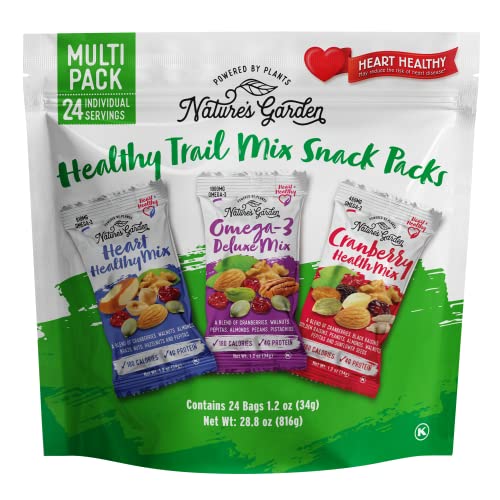If you’re like me and love snacking but struggle with lactose intolerance, finding tasty alternatives can feel like a challenge. Luckily, the world of milk alternatives has exploded with delicious options that not only cater to those of us avoiding dairy but also pack a flavor punch.
Overview of Milk Alternatives
I’m excited to explore the variety of milk alternatives available for lactose-free snacking. These options not only cater to those avoiding lactose but also enhance the flavor of snacks.
Almond Milk
Almond milk offers a light, nutty taste. It contains fewer calories than cow’s milk, with approximately 30-50 calories per cup and is low in carbs.
Soy Milk
Soy milk provides a creamy texture and serves as a good protein source, containing around 7-9 grams of protein per cup. This makes it a popular choice for those looking to boost their protein intake while snacking.
Oat Milk
Oat milk has a naturally sweet flavor and creamy consistency. It’s great for baking and cooking, with about 120 calories per cup, making it versatile for various snacks.
Coconut Milk
Coconut milk brings a rich, tropical flair to recipes. It’s higher in fat, with around 45 calories per tablespoon, and adds a unique flavor to smoothies and desserts.
Cashew Milk
Cashew milk features a smooth, rich taste, ideal for coffee and creamy sauces. It contains around 25 calories per cup and blends well in both sweet and savory snacks.
Each of these milk alternatives brings unique qualities that can elevate your snacking experience. I enjoy experimenting with different plant-based milks to create healthier snack options that cater to various tastes and dietary needs.
Popular Milk Alternatives
Exploring milk alternatives opens a world of flavors and textures perfect for lactose-free snacking. Here are some of my favorites that elevate healthy snacking.
Almond Milk
Almond milk features a light, nutty taste and creamy consistency. With about 30-50 calories per cup, it serves as a low-calorie base for smoothies or as a milk substitute in baking. Almond milk works well in recipes that require a subtle flavor, making it an ideal partner for chia puddings or oatmeal.
Soy Milk
Soy milk provides a rich, creamy texture with about 80-100 calories per cup. It’s high in protein, containing about 7 grams per serving, which makes it a great choice for smoothies or protein-packed snacks like overnight oats. Its versatility extends to cooking, where it can replace dairy milk in savory dishes without compromising flavor.
Oat Milk
Oat milk boasts a naturally sweet profile and velvety mouthfeel, often containing about 60-120 calories per cup. It’s perfect for coffee drinks or as a base for smoothies due to its slight sweetness and ability to froth. Using oat milk in savory dishes adds a unique creaminess, enhancing flavor profiles in soups or sauces.
Coconut Milk
Coconut milk brings a rich, tropical essence with around 500-600 calories per cup, depending on whether it’s canned or carton. While higher in calories, it enriches smoothies and desserts with its creamy texture. Its distinct flavor complements tropical snack recipes like smoothies or even dairy-free ice cream, adding a delightful twist to traditional flavors.
Nutritional Benefits of Milk Alternatives
Milk alternatives not only satisfy dietary restrictions but also deliver impressive nutritional benefits. They provide a range of essential nutrients, enhancing the overall value of healthy snacks.
Protein Content
Protein plays a key role in muscle repair and growth. Soy milk stands out with about 7 grams of protein per cup, making it an excellent choice for snacking. Almond and cashew milks, while lower in protein, can still contribute to your daily intake, offering around 1 gram per cup. Incorporating these options into smoothies or baked goods boosts protein intake effortlessly.
Vitamins and Minerals
Milk alternatives also shine in vitamins and minerals. Most of them are fortified with calcium and vitamin D, essential for bone health. Many brands of oat milk yield approximately 30% of the daily recommended value of calcium per cup. Additionally, soy milk provides significant levels of B vitamins, supporting energy metabolism. Including these alternatives enhances the nutritional profile of your snacks, promoting overall wellness.
Creative Snacking Ideas
Exploring tasty snacking options with milk alternatives opens up a world of creativity. I love combining flavors and textures to create enjoyable treats that support a healthy lifestyle.
Smoothies and Shakes
Smoothies and shakes are perfect for quick, nutritious snacks. I blend different fruits, veggies, and a splash of my favorite milk alternatives to create refreshing drinks. With almond milk, I whip up a banana and spinach smoothie for a low-calorie option. Soy milk works beautifully in a berry protein shake, offering a creamy texture and a protein boost. Oat milk adds natural sweetness, making it ideal for a delicious mango and coconut combo. For a tropical lift, I often mix coconut milk with pineapple and kale, delivering both flavor and nutrition. These smoothies provide hydration, energizing me throughout the day.
Baking with Milk Alternatives
Baking with milk alternatives offers a chance to create healthier treats. I substitute traditional milk with almond or oat milk in recipes for cookies, muffins, and pancakes, resulting in delightful outcomes. Almond milk enhances the flavor of chocolate chip cookies, while oat milk adds fluffiness to pancakes without compromising taste. For more indulgent recipes, I use coconut milk to make rich, moist cakes that impress everyone. Experimenting with cashew milk in brownie recipes yields a smooth, luscious texture. This flexibility inspires me to find new ways to enjoy baked snacks, ensuring they stay nutritious and delicious.
Taste and Texture Comparison
When choosing milk alternatives for lactose-free snacking, understanding the taste and texture of each option makes a world of difference in elevating your snacks.
- Almond Milk: Almond milk features a light, nutty taste that’s perfect for creating refreshing smoothies. It’s also low in calories, making it an excellent choice for those aiming to snack healthily. Its thin texture blends effortlessly into beverages or baked goods, providing a delightful base without overwhelming flavors.
- Soy Milk: Soy milk brings a creamy texture and a subtle flavor that pairs well with various ingredients. With about 7 grams of protein per cup, it satisfies both taste and nutritional needs. Its richness makes it ideal for hearty snacks like protein shakes or creamy soups.
- Oat Milk: Oat milk stands out with its naturally sweet flavor and a thicker consistency. This milk alternative froths beautifully, making it a fantastic choice for coffee or lattes. Its versatility shines through in baking, as it contributes moisture to cookies and muffins.
- Coconut Milk: Coconut milk delivers a rich, tropical flavor that can transform any dish into a culinary adventure. While it’s higher in calories, its creamy texture and distinctive taste enrich smoothies and desserts, making it a decadent option.
- Cashew Milk: Cashew milk offers a smooth, rich flavor that’s hard to beat. Its thickness works well in creamy dips or sauces, allowing for inventive snacking options. With a mild taste, it blends seamlessly into a variety of recipes, enhancing flavor without overpowering.
Experimenting with these milk alternatives can enhance my healthy snacks. Combining different flavors and textures not only adds variety but also keeps snacking exciting and nutritious. Each alternative offers unique attributes that make them suitable for a range of snack recipes, ensuring you don’t have to sacrifice taste while being mindful of your dietary needs.
Conclusion
Finding delicious snacks that fit a lactose-free lifestyle doesn’t have to be a challenge. With so many milk alternatives available I’ve discovered that there’s something for everyone. Whether I’m in the mood for a creamy smoothie or a rich dessert I can easily swap in almond, soy, oat, coconut, or cashew milk to elevate my snacking experience.
These alternatives not only taste great but also pack a nutritional punch. I love how they allow me to enjoy tasty treats while staying mindful of my dietary needs. So go ahead and explore the world of milk alternatives. You might just find your new favorite snack combination waiting to be discovered. Happy snacking!
















